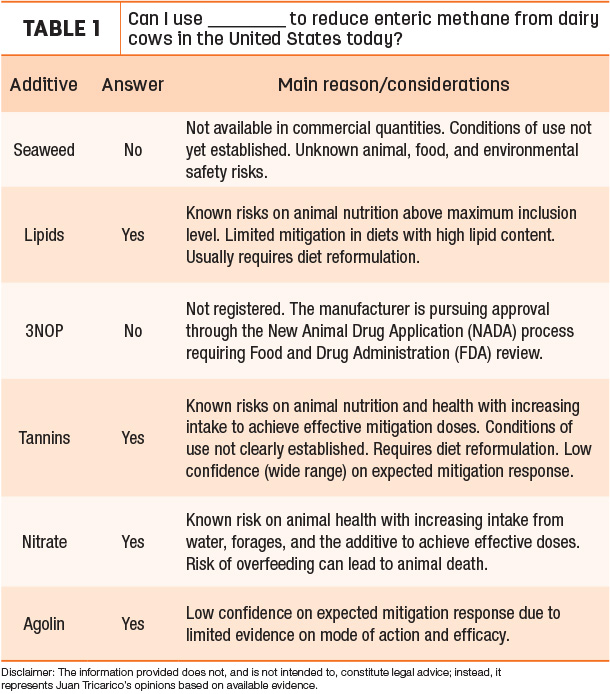At just 2% of total U.S. greenhouse gas emissions (GHG), dairies across the country have made significant improvements to produce food more efficiently, conserve resources and reduce waste.
Though the overall dairy contribution to U.S. GHG is modest, enteric methane emissions (CH4), including gas released from cow burps, account for approximately one-third of a dairy farm’s GHG footprint. Consequently, a growing number of companies are focused on introducing products to increase feed efficiency with secondary benefits of reducing enteric emissions, while others are specifically targeting reduced enteric emissions.
Ranging from simple compounds to plant extracts to seaweed, early studies point to feed additives as a promising solution, showing up to 30% reduction. We cannot talk about feed additives, however, without mentioning that substantial research is underway to better understand the effectiveness and safety of many of these products. And, as of today, there are no feed additives that meet all the criteria required to claim enteric methane reduction in their product label. These are a couple of the barriers preventing expedited market availability and widespread adoption of feed additives, and something the dairy community hopes to tackle through the Net Zero Initiative.
Newtrient, in collaboration with the Innovation Center for U.S. Dairy, continues to review emerging research and several product types in various stages of development. For further information, view the full “Dairy Feed Additives to Reduce Enteric Emissions” update on Newtrient’s webpage.

References omitted but are available upon request by sending an email to the editor.










